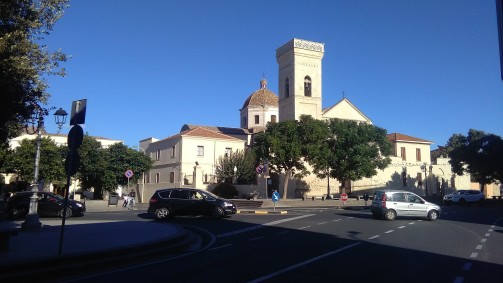The territory of the municipality of Villasor has been inhabited since pre-Nuragic and Nuragic* times, as evidenced by the presence of the ruins of the “Su Sonadori” complex found in the northwestern area. The Roman Empire exploited the land for cereal crops. It is believed that the name “Sorres” itself may derive from the Latin word meaning “granary.” During the Giudicale period, the territory of Villasor, included in the Giudicato of Cagliari, was part of the Curatoria di parte Ippis (or “parte Yppi,” or “parte Gippi”), and consisted of numerous villages that, due to plagues, famine and armed clashes, did not survive beyond the 14th century.
The municipality of Villasor arose in 1414, on the ruins of the now almost depopulated town of Sorres, when the archbishop of Cagliari Pietro Spinola granted the area as a fiefdom to the Catalan Giovanni Sinelleris, or Sivilleri, (customs officer of the castle of Cagliari and royal procurator) with the aim of repopulating the area, the scene of more than fifty years of fighting between the Aragonese and the Arboreans, by building a fortress on the ruins of the old parish church, in order to defend it from the incursions of Arborean rebels and Barbaric bandits.
From that time on, the village of Sorres became a point of attraction for the inhabitants of the other villages in the area, so much so that it gradually enlarged and became the chief town of the Curatoria, until, on September 30, 1537, it became a county (the 1st count was Giacomo Alagon, son of Isabella Besora, granddaughter of Giovanni Sivilleri, and Salvatore Alagon). On November 19, 1594, the county was then elevated to a marquisate by Spanish King Philip II in favor of James Alagon, grandson of the 1st Count. The Alagon family, one of the most important and illustrious in Sardinia and one of the oldest in Europe (apparently descended from the first kings of France), maintained the marquisate of Villasor until the feud was abolished in 1839. The last possessor was Gabriele de Sylva, son of Joseph Francis, grandson of Emanuela Alagon and Joseph de Sylva, who married in 1704 during the Austrian occupation. With the abolition of the fiefdom, Villasor acquired the appearance of an agricultural center of particular importance due to the fertility of its soils, and with a location of strategic importance, as evidenced by the inauguration of Sardinia’s first railway line on May 1, 1871, which covered the Cagliari – Villasor section.
Today it is a medium-sized municipality with a population of 4793 as of January 1, 1951, which later increased to 7062 at the 2001 census.


